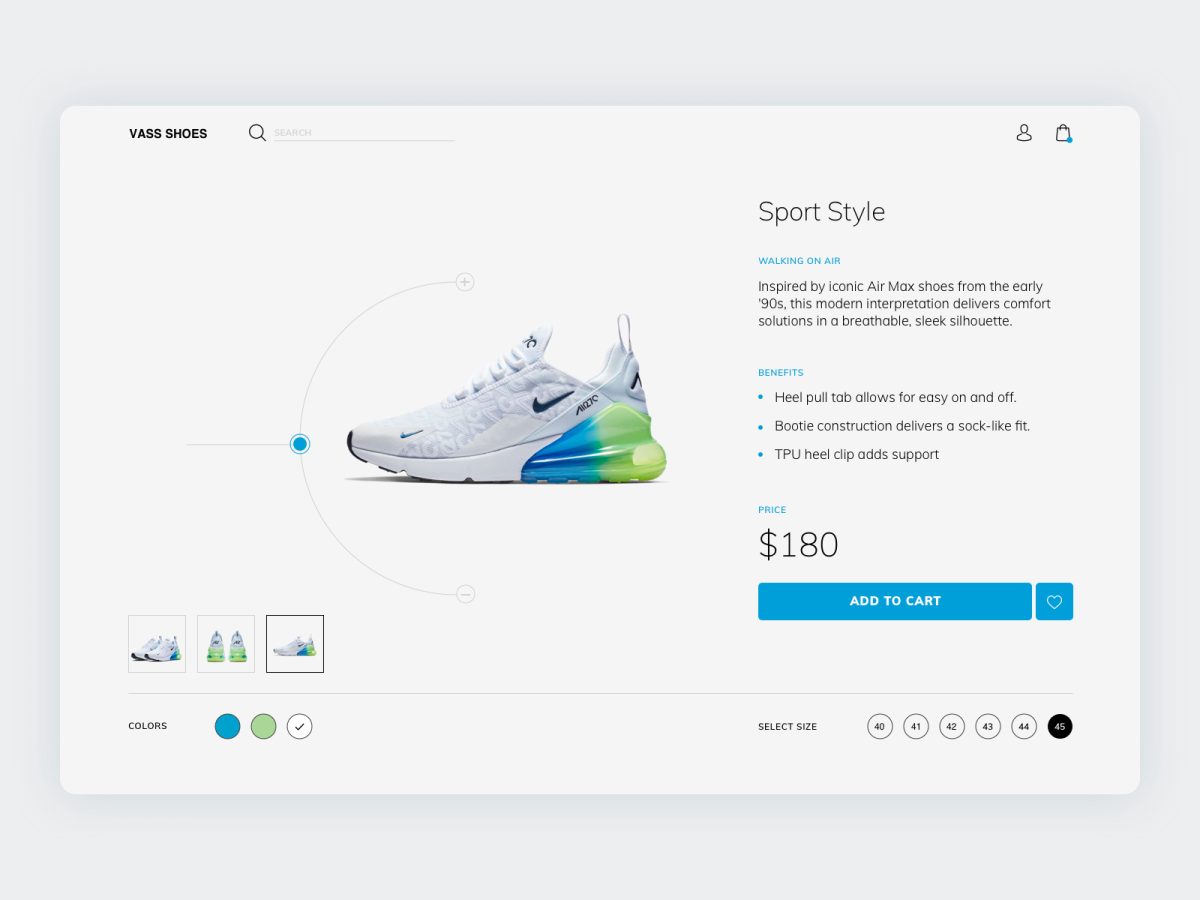Unlock the secret to boosting online sales: Conversion Optimization E-commerce. Imagine increasing revenue by 20% just by tweaking your website—a figure Forbes recently highlighted. Tempted? Let’s step into the world of conversion rate optimization, where knowing how users behave and what holds them back can turn browsers into loyal buyers. This guide unpacks the essentials of e-commerce conversion optimization and shows you practical ways to strengthen your store’s performance.
A recent study revealed that even a modest 1% rise in conversion rates can translate into a 10% jump in revenue. That’s a strong incentive to focus your efforts on conversion optimization. The strategies you’ll find here can help move the needle on your e-commerce site. Ready to see what’s possible?
Table of Contents
1. Understanding Conversion Optimization for E-commerce
2. Common Barriers to Conversion in Online Stores
3. Analyzing User Behavior Data
4. Optimizing Website Design and Navigation
5. Enhancing Product Pages for Higher Conversions
6. Implementing Effective A/B Testing
7. Personalization Strategies for E-commerce
8. Optimizing Checkout Experience
9. Leveraging Social Proof and Reviews
10. Utilizing Email Marketing for Conversion Optimization
11. Improving Site Speed and Performance
12. Tracking and Measuring Conversion Success
Understanding Conversion Optimization for E-commerce
Defining conversion optimization
Conversion optimization is all about improving the user experience so a greater percentage of visitors take a desired action. Think of it as adjusting a recipe until it’s just right. In the world of e-commerce, this means turning casual visitors into devoted customers. For example, a “macro conversion” might be a completed purchase, while a “micro conversion” could be something as small as a newsletter sign-up—both matter to your store’s long-term success. The right product page can be that secret ingredient that tips a shopper into becoming a buyer.
When you grasp the goals and benefits of conversion optimization, you’re better prepared to craft a user experience that nudges visitors along the path to purchase. Let’s dig a little deeper into how these elements work together.
Suggested Reading: What is Conversion Optimization?
Why conversion rates matter
Poor conversion rates can quietly chip away at your profits and growth, turning potential sales into missed opportunities. Improving those rates, on the other hand, helps you capture more value from the traffic you already have. There’s a psychological aspect, too: seeing conversion numbers climb feels a bit like hitting it out of the park—who doesn’t enjoy that?
Consider Amazon’s 1-Click ordering: it took the hassle out of checkout and sent their conversions soaring. Tactics like these can help your own store outpace the competition. What’s keeping you from trying them?

Common Barriers to Conversion in Online Stores
Complex checkout processes
If checking out feels like a chore, shoppers may simply walk away and leave full carts behind. Too many fields, unclear instructions, or extra steps can all sabotage the sale. Take a page from Amazon’s playbook: their simplified checkout earned them legions of happy, repeat customers. Sometimes, the simplest path really does win the race.
It’s worth reviewing your own checkout flow step by step; even small improvements can have a big impact. Wouldn’t it be great to see fewer abandoned carts and more completed orders?
Lack of trust signals
Trust matters. Shoppers want reassurance that their information is safe and your business is reliable. Displaying security badges, SSL certificates, and authentic customer reviews can tip the scales in your favor. Zappos, for instance, is famous for making trust a core part of their brand image.
Build credibility by giving customers visible, concrete reasons to feel secure. Sometimes, a single trust badge can mean the difference between a sale and a skeptical retreat.
Analyzing User Behavior Data
Using analytics tools
Analytics tools like Google Analytics open a window into your visitors’ habits—where they linger, what makes them leave, and what nudges them to buy. Tracking metrics such as bounce rate and conversion rate gives you hard data to guide your decisions. Want to pinpoint where shoppers drop off? Heatmaps can light the way.
The more you know about how your customers move through your site, the better you can tailor their experience. Don’t be shy about digging into the numbers; they’re often full of surprises.
Identifying drop-off points
Spotting where users bail out of the shopping process is half the battle. By zeroing in on those moments using analytics and user feedback, you can prioritize what needs fixing. Maybe it’s a clunky checkout; maybe it’s a confusing product page. Testing and redesigning these elements, piece by piece, can yield impressive results.
Regularly reviewing these drop-off points helps keep your site tuned to what real shoppers want. Would you ignore a leaky faucet? Then don’t ignore drop-offs—they’re just as costly.
Optimizing Website Design and Navigation
Mobile responsiveness
Today, a large share of shoppers use mobile devices. If your site isn’t easy to use on a phone or tablet, you’re missing out. Key design factors—like readable text, finger-friendly buttons, and clear layouts—can boost sales. A mobile-optimized site opens your doors to a much wider audience.
Make browsing and checkout smooth, no matter the device. A little attention here can mean a lot more business.
Clear call-to-action buttons
Call-to-action (CTA) buttons guide users along, telling them what to do next. Their color, size, and position on the page all matter. A well-placed, easy-to-spot CTA invites action—whether that’s “Buy Now,” “Add to Cart,” or “Learn More.”
Take a hard look at your CTAs: are they obvious, inviting, and placed where users need them? Sometimes, a small tweak leads to a big lift in conversions.
Enhancing Product Pages for Higher Conversions
Compelling product descriptions
A great product description goes beyond listing features; it tells a story and helps the shopper picture the item in their life. Use clear, vivid language and details that answer real questions. Bring the product to life—can the shopper almost feel the fabric or imagine the gadget making their morning easier?
Review your descriptions and ask: do they inspire confidence and curiosity, or do they just recite specs? A few fresh words can make products leap off the page.
High-quality product images
Images are often the first thing a shopper notices. Sharp, well-lit photos from different angles, and the ability to zoom in for a closer look, give shoppers what they need to decide. Show the product in context—a dress on a model, a lamp lit up in a cozy room. That extra visual context builds trust and boosts buying confidence.
Don’t overlook the impact of your images; they’re worth the investment and can be a silent sales force working around the clock.

Suggested Reading: How to Improve Conversion Rates
Implementing Effective A/B Testing
Elements to test
A/B testing lets you compare two versions of something—like a CTA color or product image layout—to see what works best. Choose elements to test based on your analytics and what users seem to struggle with. Let data, not hunches, guide your decisions.
Testing doesn’t have to be complicated. Maybe you swap out a headline on your top-selling product page or try a new checkout button color. Over time, these tests reveal what resonates with your customers and what falls flat.
Interpreting results
After running an A/B test, it’s essential to look at the numbers with a critical eye. Do the results carry enough weight to act on? Statistical significance and confidence intervals help answer that question. Iteration is key; sometimes the first test points the way, but the second or third brings the real breakthrough.
Use each round of results to shape your next steps. Think of it as tuning an instrument—each adjustment brings you closer to harmony.
Automate Conversions, Instantly Turns Traffic Into Leads & Sales
Don’t let visitors slip away! Quickly grow your subscriber list, attract more leads, and drive up sales with our AI-powered lead generation solution
Personalization Strategies for E-commerce
Product recommendations
Smart product recommendations can make your site feel custom-tailored to each shopper. You might use algorithms that look at what similar users bought, or offer add-ons based on the customer’s browsing history. When done well, these recommendations feel like a thoughtful suggestion from a savvy friend.
Check that your recommendations are actually relevant—if they aren’t, users may tune them out. The right nudge can be all it takes to increase basket size.
Dynamic content
Dynamic content changes based on who’s visiting and what they’ve done before. That might mean showing a returning visitor a special offer, or highlighting new arrivals for a first-time shopper. Use data wisely to shape these experiences.
An online store that adapts in real time makes shoppers feel seen and valued. It’s a subtle touch, but one that can keep people coming back for more.
Optimizing Checkout Experience
Guest checkout options
Shoppers often abandon their carts if forced to create an account. Offering guest checkout streamlines the process, making it quick and painless for buyers in a hurry. If you need more information later, you can always ask after the sale is complete.
Review your checkout flow: is signing up optional, or a roadblock? A simple guest checkout can make the difference between a sale and a lost customer.
Simplifying forms
Long, complicated forms can sink conversions fast. Stick to the essentials—name, shipping address, payment info. Use autofill, clear labels, and password helpers to reduce friction. Every extra step is a chance for the shopper to second-guess their purchase.
Simple forms aren’t just nice—they’re effective. Give customers an easy ride to the finish line.

Leveraging Social Proof and Reviews
Displaying customer testimonials
When shoppers see that others have had a good experience, it reassures them. Displaying honest testimonials and reviews builds trust and gives new buyers a window into what to expect. Gather reviews from multiple sources, and don’t shy away from showing a mix—including how you addressed any negative feedback.
Ask yourself: do your testimonials feel authentic and persuasive? The right words from a previous customer can seal the deal for someone on the fence.
Trust badges and certifications
Badges from recognizable organizations, security icons, and certifications all signal that a site is credible and secure. These aren’t just for show; they give shoppers a reason to feel safe entering their details.
Make sure these signals are clear and visible where they matter most, such as during checkout. Sometimes, trust is built in a single glance.
Utilizing Email Marketing for Conversion Optimization
Abandoned cart emails
When a shopper leaves items behind, a timely email can remind them to finish what they started. Personalization and a sense of urgency—like a limited-time discount—add extra motivation to return and complete the purchase.
Look at your abandoned cart emails: are they friendly, helpful, and relevant? Often, the right nudge is all that’s needed to save a sale.
Personalized promotions
Personalized promotions—think special discounts, targeted offers, or product suggestions—make users feel valued. Use the information you have to craft messages that resonate with different customers. Avoid flooding inboxes with generic deals; a well-timed, relevant email builds loyalty and boosts conversions.
Check your approach: are your promotions tailored or just another mass message? A personal touch stands out in a crowded inbox.
Improving Site Speed and Performance
Image optimization
Big, uncompressed images can bog down your site, making users wait and sometimes walk away. Keep images crisp but quick to load by using compression and smart formats; caching helps, too. A fast site not only pleases shoppers, but it can also improve search rankings.
Test your main pages—if images are slowing things down, it’s time to take action. Faster pages mean happier visitors, plain and simple.
Minimizing third-party scripts
Too many third-party scripts, like ads or widgets, can slow your site to a crawl. Load them asynchronously or manage them carefully so they don’t get in the way of your core content. Remember, every second counts during a user’s visit.
Take inventory of what’s running on your site. Cutting the fat can make your pages load faster and keep visitors engaged.
Tracking and Measuring Conversion Success
Key performance indicators
To know whether your efforts are paying off, set clear key performance indicators (KPIs). These might include conversion rate, average order value, or total revenue. Dashboards and analytics tools can help you keep tabs on these numbers over time.
Regularly review your KPIs to spot trends, successes, or warning signs. Numbers tell a story; the trick is learning to read between the lines.
Continuous improvement
Conversion optimization isn’t a one-and-done affair; it’s more like tending a garden. Use feedback, data, and ongoing testing to keep your site growing and adapting to new trends. Every tweak is a chance to move closer to your goals.
Stay curious and persistent. In the world of e-commerce, those who keep evolving tend to come out ahead.
Conclusion
Conversion Optimization E-commerce plays a pivotal role in boosting online sales and creating memorable customer experiences. By focusing on user behavior, solving common obstacles, and embracing thoughtful strategies, you’ll guide more visitors to complete purchases. Make data your ally and treat improvement as an ongoing journey; your efforts will show in your results. Isn’t it time you started fine-tuning your e-commerce site for better conversions?
“The best way to get started is to quit talking and begin doing.”
Walt Disney
 What is Conversion Optimization?
What is Conversion Optimization? How to Improve Conversion Rates
How to Improve Conversion Rates